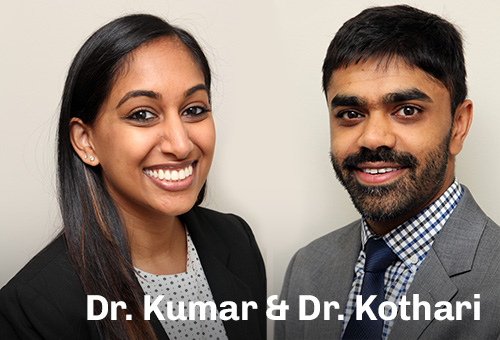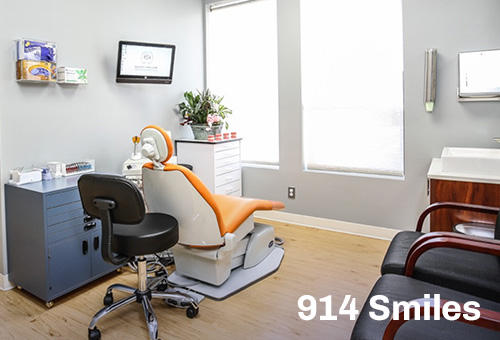
At 914 Smiles, we offer orthodontics and pediatric dentistry in Tarrytown, NY. So, as you can probably imagine, it’s all teeth, all day at the office. But we know for anyone not in the oral health field, the mouth can be a bit of a mystery. Especially when it comes to kids whose dentition is constantly evolving.
Well, Dr. Reshma Kumar and Dr. Rishi Kothari have you covered with a lesson in smile anatomy. In this post, we’ll cover the parts of a tooth, the different types of teeth and what their roles are.
What are the Parts of a Tooth?
When a primary, or baby, tooth becomes loose, it’s because the permanent tooth below it is pushing against it. As this happens, the roots and contents inside of the baby tooth start to dissolve, which helps the tooth fall out on its own. This can lead some people to think baby teeth are hollow. In reality, they’re not and the anatomy of a baby tooth and a permanent tooth are the same.
Here are the main parts of a tooth:
Enamel – Tooth enamel is the hardest substance in the human body! It’s the white, shiny, calcified outer layer of the tooth that covers the dentin. Enamel protects the tooth from acids, bacteria, physical forces, hot, cold and anything that can reach the tissue inside and cause damage and pain.
Crown – The crown is the visible part of the tooth that sits above the gum line. It’s covered in enamel.
Dentin – Dentin is the hard tissue below the enamel and cementum. It has teeny, tiny, microscopic tubules. When the enamel wears down and exposes the dentin, heat, cold, sweetness and acidity from food and drinks can enter the tubules and cause tooth sensitivity.
Pulp – Pulp is the soft tissue found at the center of the tooth in the pulp chamber and root canal. It’s made up of nerves, blood vessels and connective tissue. The pulp provides blood to the tooth’s root and surrounding tissues and is also responsible for producing dentin.
Root – The root is located below the gum tissue and secures the tooth into the jawbone.
Cementum – The tooth’s root is covered in cementum. The hard connective tissue protects the root canal and attaches the root to the periodontal ligament.
If you’d like a visual, check out a helpful tooth anatomy diagram from the American Dental Association here.
How Many Teeth Does a Child Have?
Kids have 20 primary teeth. Yup, these teeth will fall out. But that doesn’t mean they’re not important. Keeping the baby teeth healthy and strong so they can fall out naturally will be a boon for your child’s oral health, now and when their permanent teeth come in. The primary teeth:
- Maintain space for the permanent teeth to erupt properly. If a baby tooth falls out too early and a dental space maintainer isn’t placed, the surrounding teeth will often shift into the gap. This can result in orthodontic problems, including excessive crowding, and, sometimes, even block a permanent tooth from coming in (impacted tooth).
- Help kids speak clearly. Having a full set of baby teeth in their correct places helps young kids master the fundamentals of speech and learn how to articulate and produce speech sounds properly.
- Aid in facial development. Your child’s primary teeth help to guide the development of their jaw and facial structure.
- Let kids bite and chew properly. Having healthy, strong teeth allows kids to eat a wider variety of foods and chew efficiently for good digestion.
How Many Permanent Teeth Do We Have?
Teens and adults have 32 permanent teeth (if the wisdom teeth come in). This is because some of the permanent teeth erupt into empty spaces and don’t replace baby teeth.
What are the Different Types of Teeth?
Now that we’ve covered tooth anatomy, let’s talk about the different types of teeth and their functions.
Incisors
Kids and adults have eight incisors. There are four in the top center of the mouth and four in the lower center of the mouth. The central incisors are the two very front teeth closest to the center of the lip in the upper and lower arch. The lateral incisors are the two teeth on either side of the central incisors.
The lower central incisors are usually the first teeth a baby gets between 6 and 10 months of age, followed by the upper central incisors and upper and lower lateral incisors. Because the teeth tend to fall out in the same pattern, these are also the teeth most kids lose first, around age 6 or 7, before being replaced by permanent teeth.
What do incisors do? These thin, flat-bottomed teeth are for biting into food, cutting it and pulling it into the mouth. The incisors also help with speech, which is why when kids lose their top front teeth, they tend to develop a temporary lisp or whistling noise when they talk.
Cuspids (Canines)
The cuspids, or canines, are the pointy, sharp teeth next to each lateral incisor. Children and adults have a total of four of these teeth. The primary cuspids erupt between 16 and 23 months of age and fall out when kids are between 9 and 12 years old. Shortly after the primary canines fall out, the permanent ones will come in.
Cuspids, or canines, look like something you’d see on a predatory animal, and rightfully so, since these teeth are meant to grip and tear into food. With super strength and long roots, they’re ideal for the job. And because the cuspids are usually the first teeth to meet when you close your mouth, they also play a role in guiding the jaw and other teeth into place to align the bite.
Primary Molars
Children have four molars: the first primary molars and the second primary molars. The second molars are the last baby teeth your child will get around 2 or 3 years old, bringing the total number of baby teeth to 20. The primary molars start to fall out between ages 9 and 12.
These large teeth with a wide surface are necessary for chewing. They break down food into small pieces for easy swallowing and proper digestion.
Premolars (Bicuspids)
The first and second premolars, technically called the first and second bicuspids, are similar to molars but also have some of the features of canine teeth. Instead of the four cusps that permanent molars have, premolars have two cusps, hence the name bicuspids.
Young children don’t have premolars. Instead, their primary molars are replaced by the permanent premolars between the ages of 10 and 12. There are eight premolars, four in each arch, situated between the permanent molars and the canines.
The premolars help grind and break up food. Like the molars, they have pits and grooves on the chewing surfaces, which aid in chewing, but also make them susceptible to tooth decay because they can trap bacteria and food. Dr. Kumar may recommend protecting your child’s premolars with dental sealants.
Permanent Molars
The first and second permanent molars erupt into empty space and don’t replace primary teeth. Most kids get their first permanent molars around age 6 or 7 and their second permanent molars by age 13 for a total of eight molars. These teeth are the largest and widest teeth in the mouth.
The molars are built to withstand chewing and grinding forces and their role is to break down food into pieces that are easy to swallow and digest. They also establish the back of the bite. In fact, one of the reasons the American Association of Orthodontists recommends kids have their first orthodontic evaluation by age 7 is because the first permanent molars are in.
The first and second molars have the deepest pits and grooves, making them the most cavity-prone teeth. According to the CDC, 9 in 10 cavities occur in these back teeth. To prevent this, we recommend sealing the permanent molars as soon as they erupt.
Third Molars (Wisdom Teeth)
Not everyone gets their wisdom teeth, but for those who do, these third molars usually erupt in the late teen years or early adulthood. If all four wisdom teeth come in, there will be a total of 32 teeth.
While wisdom teeth may have served an important purpose long ago, with our modern diet, they’re not a necessity. Since they’re located so far back in the mouth, making them difficult to clean, and they often cause complications like impaction and infection, having them extracted is extremely common.
Give Your Child the Gift of Healthy, Strong Teeth
As you can see, the different types of teeth all have important functions, including the baby teeth! Keep them healthy by visiting Dr. Kumar for a kids’ dental exam and cleaning once every six months.
Is your child 7 or older? Book a complimentary growth and development check-up with our orthodontist Dr. Rishi Kothari.
Together, Dr. Kumar and Dr. Kothari can ensure your child’s teeth and jaw develop as they should and your kiddo’s smile looks and functions at its absolute best.



